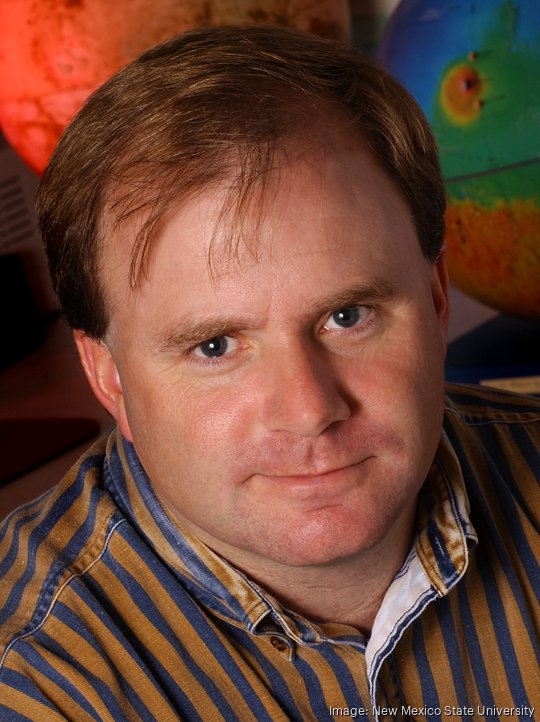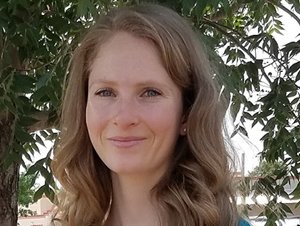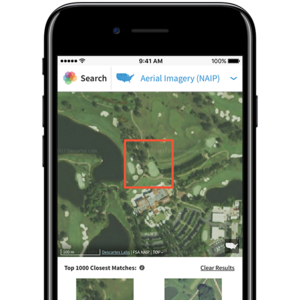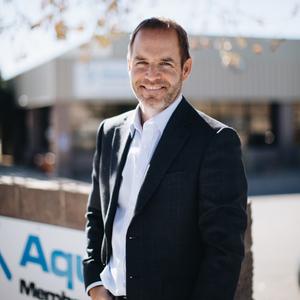
On July 20, 1976, NASA's Viking 1 lander touched down on the surface of Mars, marking the first successful landing on the Martian surface. Then a teenager living in New Orleans, Louisiana, Jim Murphy woke up early to watch the lander reach the surface on PBS.
Inspiration from observing the successful Martian mission would pave the way for Murphy's career path in atmospheric science, which took the astronomer from the Pacific Northwest to a California research center to, eventually, far Southern New Mexico.
"I thought it was really interesting that Mars had an atmosphere, which I hadn't ever known before," he told Albuquerque Business First. "I think I can trace back what I've done the last 30-plus years to that morning in 1976 and my interest in terrestrial atmosphere and weather."
Murphy moved to New Mexico in 1998 when he accepted a faculty position at New Mexico State University in its Department of Astronomy in its College of Arts and Sciences. He's stayed at the Las Cruces university for 25 years, taking over as head of the Astronomy Department in 2005 and then moving into the role of associate dean of research in the College of Arts and Sciences in 2016.
He came to New Mexico after working as a researcher at NASA's Ames Research Center in California. He completed his undergraduate degree at Texas A&M University and then went to graduate school at the University of Washington in Seattle.
While studying in Seattle, Murphy landed a fellowship at the Ames Research Center. He stayed there for around seven years before moving to New Mexico.
He never directly worked for NASA, Murphy told Business First. He received graduate funding and funding as a postdoctoral scientist, and then he had employment through San Jose State University for his work at the research center.
Then came New Mexico State University, from where he's set to retire on July 1.
Business First caught up with Murphy as the astronomer nears retirement to hear more about his research focus and experience at the Las Cruces institution.
This interview was edited for brevity and clarity.
Albuquerque Business First: What has been your primary research interest over the years? Has it evolved over time, or has it always been centered in one field?
Jim Murphy: It's certainly been centered on Mars weather and climate. I've had participation in spacecraft missions. I was part of the science team for the Mars Pathfinder lander in 1997, and there were, I think, four orbiting spacecraft that were employing this process called 'aerobraking' … that was perceived as a mechanism to reduce the cost of a mission, but I've never seen the accounting to confirm that because you increase the risk and then you have plenty of people involved in the process.
So, I was one of three atmospheric scientists who would daily interpret the measurements obtained by the spacecraft passing through the atmosphere — and this, you know, 100 kilometers above the surface so just a wisp of an atmosphere there — but between that and talking to the engineers and providing a forecast with what might happen the next time, they could design if they need to go a little deeper or a little more shallow into the atmosphere to get what they want.
How does Mars's atmosphere compare to the Earth's atmosphere? It's much less substantial. The surface pressure, the kind of weight of the column of air, is about one percent on Mars compared to Earth.
I was talking with somebody … about the movie 'The Martian.' I enjoyed the movie but the precipitating event of the wind storm and knocking rocks and things around, that doesn't happen on Mars because there's just not enough gas density to move those big chunks around.
What were you working on most recently before you announced your retirement, and what was the reason that you chose to retire and step away from NMSU now? I've been in administration for the last seven years, so I haven't had much time to focus on my own research. This position had the purpose of me trying to assist faculty here in the College of Arts and Sciences and their research and creative activities.
I've been here at NMSU for 25 years. I'd like to get back to some of my own research, which is one of the things I intend to do when I'm done here.
What have you gotten out of your work at NMSU over the years? When I came here, my atmosphere work was terrestrial. The department here has a history of planetary science activity. Reta Beebe, who's been in the department for 50-plus years, was involved with the Voyager missions back in the '70s. She was responsible for the NASA Planetary Data System Atmospheres Node coming to NMSU 30 years ago.
So, in amongst all that planetary work that has gone on and continues to go on … it has the full gamut of astronomy. It does solar physics, it does galaxy studies, it does extragalactic studies. There's been a history of faculty that have looked at the large-scale structure of the universe. It's really interesting and it was very educational for me to be in that environment where I was exposed to so much more than I had seen as a graduate student.
I took maybe one astronomy class as a graduate student and never had anything at the undergraduate so I had a lot to learn when I got here about astronomy, and the department taught me that.
Do you have a favorite thing that you've gotten to work on over the years, whether it's at NMSU or outside of New Mexico? Certainly one is having been part of the science team for the Mars Pathfinder lander 26 years ago. When you're involved in a mission and there are schedules of how things are supposed to occur, there's generally not the time to say, 'I'll put that off until tomorrow.' That was kind of an eye-opening aspect of the exploration versus the focus on science and analyzing data.
Here at NMSU, I've greatly enjoyed having the opportunity to work with students. I had eight students complete [doctorates] and three complete masters, and I'm pretty sure I learned more from them than they would have learned from me. I really enjoyed getting to see the students go off on their own and teach me, that was really fun.









